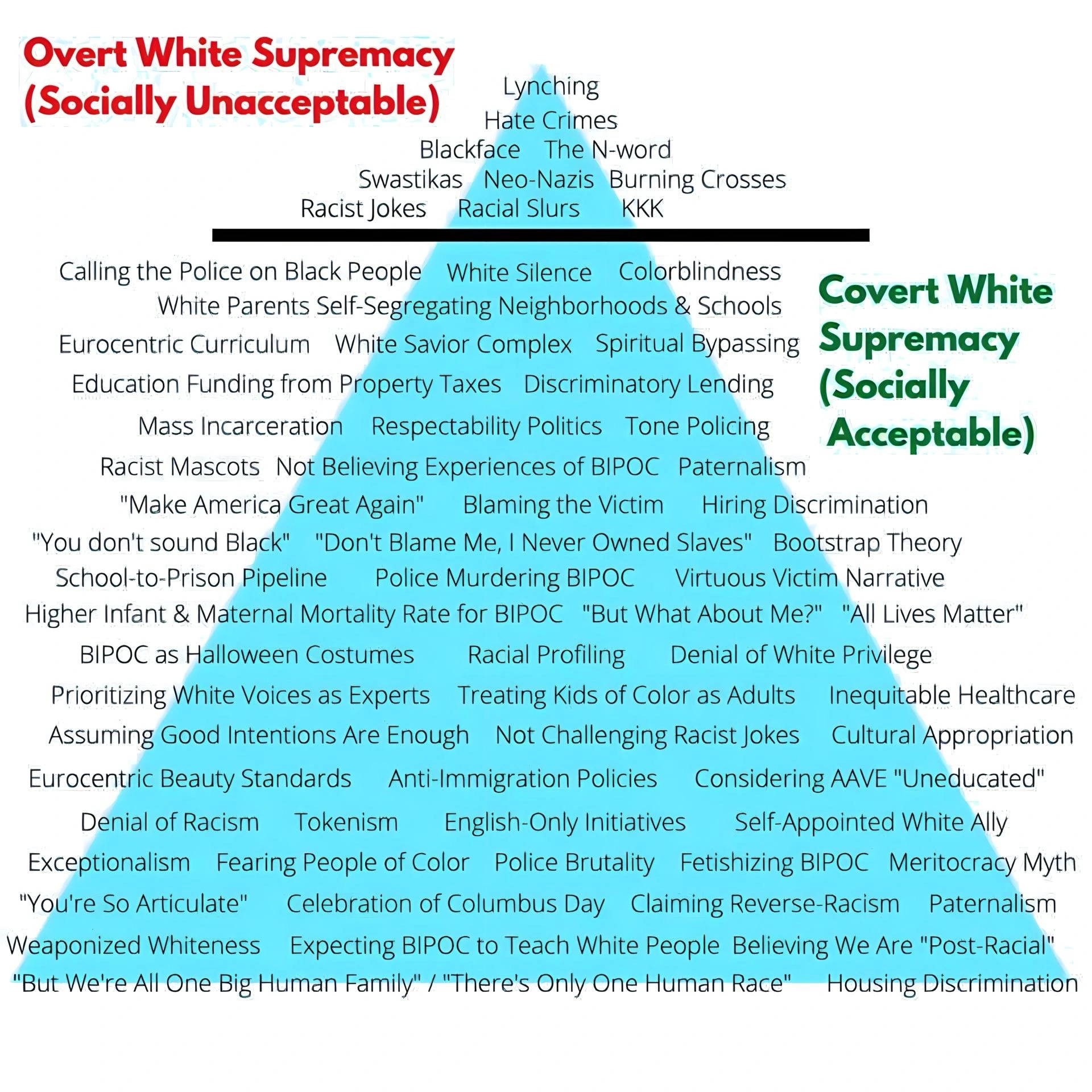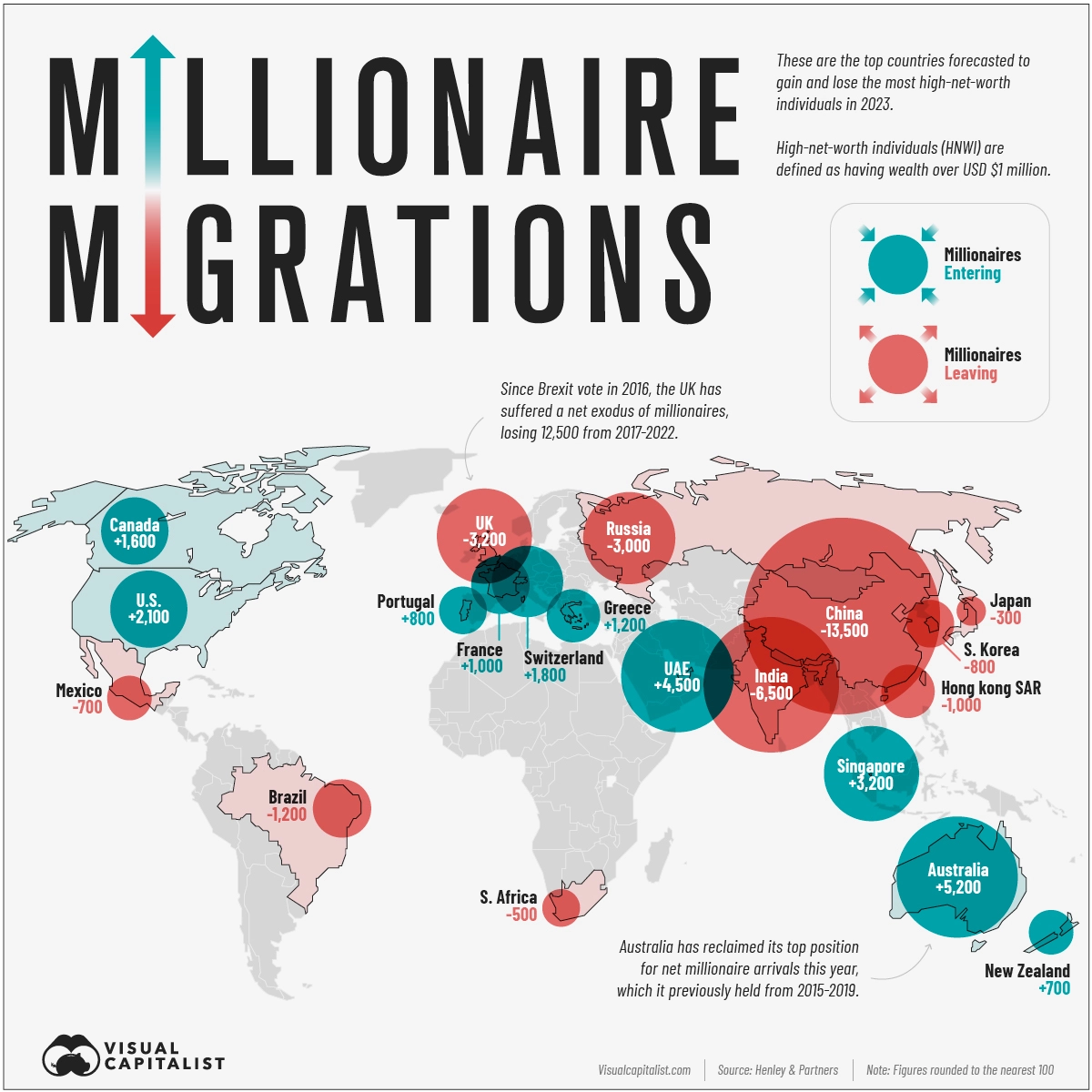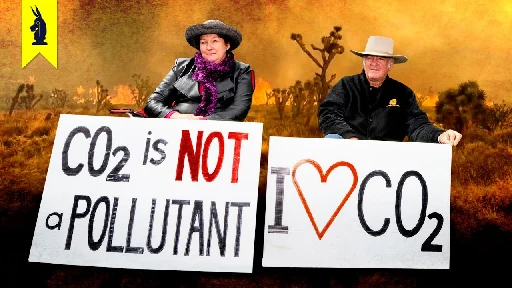Informed Tankie
-
A new book on neo-colonialism just came out, analysing 6.100 IMF loans from these last 40 years. They're doing the opposite of what IMF co-funder J.M.Keynes advocated.

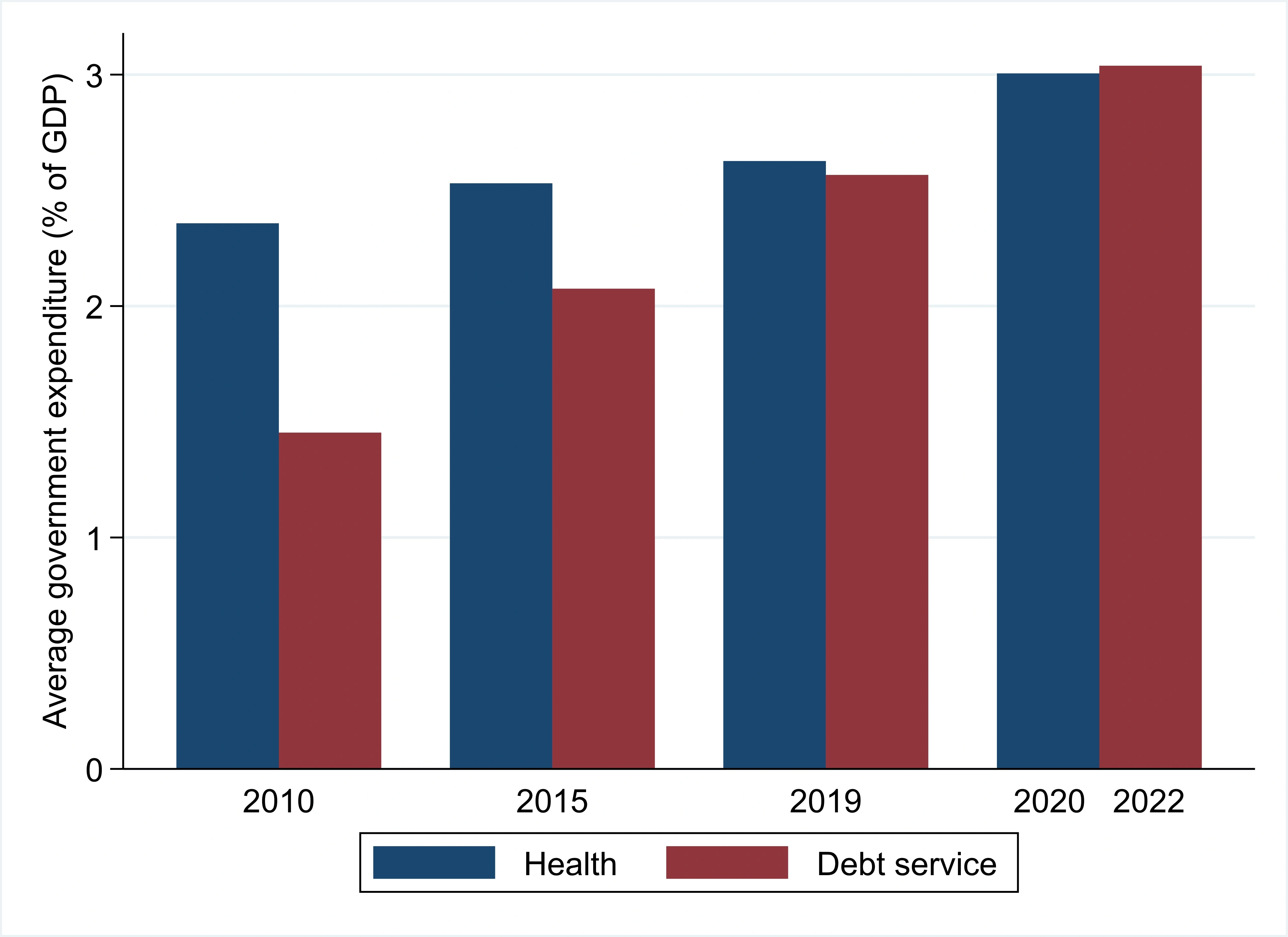
Here's the thread.
Oxfam reminds us that the IMF is mostly about austerity measures.
It also contains these two maps, note how there's never any conditions for rich countries, i didn't know that the IMF was solely for nonwestern countries(, yet controlled&financed by the west) : ! ! The second map aims to show that « half of developing country govts will be spending less in 2024 than in the 2010s.», (and adds that « Austerity measures are a key feature of the post-pandemic world »). « But this image neglects that for many developing countries austerity has been 𝘤𝘰𝘯𝘴𝘵𝘢𝘯𝘵 over the past few decades. »
Here's a list of countries by their percentage of social welfare spending. Cause or consequence ? !
I'm not saying that the solution is simple or obvious though, but the contrast with keynesian economics is striking, and i mostly wanted to share the graph in the thumbnail of this post. !
-
Found on /c/[email protected]


It's not that much linked to communism, but i like lemmit.online and there's one or two interesting information. I especially liked the clear link between the dates and the geographical position. It's a bit too western-centered though.
- hawaiiankingdom.org Hawaiian Nationality: Who Comprises the Hawaiian citizenry
The European Convention on Nationality defines nationality as the legal bond between a person and a State and does not indicate the person’s ethnic origin. It is a person owing loyalty to and…

The Nation of Hawaii details their plan for citizenship for when the American occupation leaves the territory.
For those who don't know, the Nation of Hawaii is the reformation of the deposed state occupied by the US in 1898. They are fighting for the complete independence of Hawaii and an end to the illegal US annexation.
-
A t.l.;d.r. of China's proposals for a "global community of shared future"
Titled A Global Community of Shared Future : Proposals and Actions
It was harder than for a lot of other texts to cut parts, i've only cut roughly half of it. Do not hesitate to read the full version with, e.g., a T2S application on your phone while you're doing something else. In the end, this text won't surprise anyone here, it would probably benefit more from being read by people supporting anti-China policies, but it's another pro-China argument to add to the list, and there're informations in it.
The first part tries to convince the rest of the world that we should live harmoniously together. « [After a speech from 2013, President Xi Jinping] fleshed out a five-point proposal[ in 2015 during the 70th session of the United Nations General Assembly] :
- We should build partnerships in which countries treat each other as equals, engage in extensive consultation, and enhance mutual understanding.
- We should create a security environment featuring fairness, justice, joint efforts, and shared interests.
- We should promote open, innovative and inclusive development that benefits all.
- We should increase inter-civilization exchanges to promote harmony, inclusiveness, and respect for differences.
- We should build an ecosystem that puts Mother Nature and green development first.
He further proposed five goals for the world[ at the u.n. in 2017] :
- We should build a world of lasting peace through dialogue and consultation.
- We should build a world of common security for all through joint efforts.
- We should build a world of common prosperity through win-win cooperation.
- We should build an open and inclusive world through exchanges and mutual learning.
- We should make our world clean and beautiful by pursuing green and low-carbon development. This represents the steady increase in the depth and scope of the vision. »
The second part develop examples of what China did on its part in order to further these goals : « The past decade has seen steady progress in implementing the vision. From bilateral to multilateral and from regional to global dimensions, ground-breaking results have been achieved on every front. The Belt and Road Initiative, the Global Development Initiative, the Global Security Initiative, and the Global Civilization Initiative have taken root and borne fruits, bringing prosperity and stability to the world and creating substantive benefits for the people. Over the past decade, the vision of a global community of shared future has gained broader support. More countries and people have come to the understanding that this vision serves the common interests of humanity, represents popular calls for peace, justice and progress, and can create the greatest synergy among all nations for building a better world. (...) It is therefore of great significance to promote solidarity and cooperation among all countries and create a better future for humanity. The Chinese government is publishing this white paper to introduce the theoretical base, practice and development of a global community of shared future. We hope it will improve understanding and expand consensus in the international community, and reinforce the global effort to realize this vision. »
Good luck to them.
************************
Preface : In the universe there is only one Earth, the shared home of humanity. (…). We should endeavor to build an open, inclusive, clean and beautiful world that enjoys lasting peace, universal security, and common prosperity, turning people’s longing for a better life into reality. The vision of a global community of shared future bears in mind the wellbeing of all humanity. It is based on both observation of the present and visionary planning for the future. It lays out goals, charts the path, and offers action plans to achieve them. It concerns the future of humanity and the destiny of every human being.
I. Humanity at a Crossroads
1. Interdependence is the prevailing trend throughout history
(…) All countries bear responsibility for the safety of this planet and the future of humanity. If the pursuit of power and profit escalates to vicious competition or even armed conflict, self-destruction will be the certain outcome. Throughout history, peace and development have been the primary aspirations of humanity. (…) The idea that “we are all one human family” is gaining traction, and the desire for a global community grows stronger than ever. [Other arguments : Globalization merged the individual markets into a single one. Technologies expanded the human exchanges/communications. Shared interests/responsibilities/destiny, and wellbeing/security.]
2. Global challenges call for global response
[Details on why there's a deficit of peace. A deficit of global development as well(, and with more economic isolationism). And « The security deficit is glaring », due to more intense global strategic competition and a lack of mutual trust, in the form of swindling/plundering/oppression/'zero-sum game', and terrorism/'cyber-attacks'/'transnational crime'/'biological threats'. Finally, there's a governance deficit(, energy/food/debt, global climate, digital divide, artificial intelligence, the global governance system keeps breaking down on issues requiring resolution).] « Only when all countries work together, only when we align individual interests with the interests of all, and only when we truly build a global community of shared future, can humanity tide through the crises confronting us and sail towards a better future. »
3. The new era calls for new ideas
This is an era when the world is undergoing rapid changes almost every day. We can no longer interpret the reality we are living in or find satisfactory solutions to the conundrums we are facing by means of traditional approaches to international relations. It is increasingly obvious that the idea that “all strong countries will seek hegemony”, the obsession with superior strength, and the zero-sum mentality are in conflict with the needs of our times. (…) There is no iron law that dictates that a rising power will inevitably seek hegemony. (…) China understands the lesson of history – that hegemony preludes decline. We pursue development and revitalization through our own efforts, rather than invasion or expansion. The strong preying on the weak is not a way for humans to coexist. (…) In the age of globalization, all countries are interdependent and interconnected (...) inclusive development for the benefit of all is the right path forward. No country should hope for others to fail. Instead, it should work together with other countries for the success of all. China consistently aligns its development with global development, and aligns the interests of the Chinese people with the common interests of all peoples around the world. When the world thrives, China thrives, and vice versa.
II. An Answer to the Call of the Times and a Blueprint for the Future
Standing at a crossroads, humanity is faced with two opposing options. One is to revert to the Cold War mentality that deepens division and antagonism and stokes confrontation between blocs. The other is to act for the common wellbeing of humanity, strengthen solidarity and cooperation, advocate openness and win-win results, and promote equality and respect. The tug of war between these two options will shape the future of humanity and our planet in a profound way. To build a global community of shared future is to pursue openness, inclusiveness, mutual benefit, equity and justice. The goal is not to replace one system or civilization with another. Instead, it is about countries with different social systems, ideologies, histories, cultures and levels of development coming together to promote shared interests, shared rights, and shared responsibilities in global affairs. The vision of a global community of shared future stands on the right side of history and on the side of human progress. It introduces a new approach for international relations, provides new ideas for global governance, opens up new prospects for international exchanges, and draws a new blueprint for a better world.
1. Introducing a new approach to international relations
“What kind of world we need and how to build such a world” has become a vital question with the future of humanity at stake. China’s answer to this question of the times is to build a global community of shared future. It means that with their futures closely interlocked, all nations and countries should stick together, share weal and woe, live together in harmony, and engage in mutually beneficial cooperation. The idea is based on a reasonable design for state-to-state relations. It reflects the general consensus and common expectations of the international community, and demonstrates China’s sense of duty as a responsible major country.
2. Highlighting the new features of global governance
– Openness and inclusiveness : Countries should not draw lines based on ideology, target specific countries, or gang up to form exclusive blocs. The ocean is vast because it admits all rivers. (...) – Equity and justice : The world needs justice, not hegemonism. No country has the right to dominate global affairs, dictate the future of others, or monopolize development advantages. Countries should safeguard the international order based on international law (...). The practice of double standards or selective application of law should be rejected. – Harmonious coexistence : Countries should strive to achieve peaceful coexistence and common development by seeking common ground while reserving differences. Planet Earth is not an arena for wrestling between countries, but a stage for human coexistence. Despite their differences and diverse features, countries can develop together in harmony and unity, and it is precisely such diversity that gives strength to global development. – Diversity and mutual learning : Different histories, national conditions, ethnic groups, and customs have given birth to diverse civilizations. Diversity of human civilizations is a basic feature of our world. Mutual learning among civilizations provides important impetus to human progress. (...) – Unity and cooperation : Countries should act for the greater good. Pursuing development behind closed doors can only result in poverty. Viewed from a “country-first” perspective, the world is small and crowded, and locked in “fierce competition”; viewed from the perspective of a shared future, the world is vast, and full of opportunities for cooperation. No country can overcome global development challenges on its own. Cooperation among all countries is the only viable option.
3. Opening up new prospects for international exchanges
The principle of sovereign equality runs through the UN Charter. All countries are equals. [Then details/argumentation for the five-point proposal listed at the beginning]
4. Outlining a new vision for building a better world (cf. the five goals listed at the beginning)
The stone wall at the entrance to the UNESCO headquarters carries the inscription of one single message: “Since wars begin in the minds of men, it is in the minds of men that the defenses of peace must be constructed.” (...) Countries should respect each other’s sovereignty and territorial integrity, respect each other’s core interests and major concerns, and respect the development path and social system chosen by other peoples. We should build a world of common security for all through joint efforts. It means turning absolute security for one into common security for all. (…) When neighbors are in trouble, instead of reinforcing one’s own fences, one should extend a helping hand. (...) It is normal for countries to have differences, and they should be properly addressed through dialogue and consultation. As long as we show sincerity, goodwill and political wisdom, no conflict is too big to resolve and no ice is too thick to break. We should build a world of common prosperity through win-win cooperation. It means bidding farewell to the winner-takes-all mindset and sharing development achievements. (...) While we should make the pie of the global economy bigger, it is even more important to divide it well, so that development achievements can benefit people of all countries more equitably, and bring about true cooperation and win-win results. We should build an open and inclusive world through exchanges and mutual learning. It means bidding farewell to the mindset that one civilization is superior to another and starting to appreciate the strengths of other civilizations. Our world can fully accommodate the common growth and progress of all countries, and success for one country does not mean failure for another. There is no universally applicable development path. A development path that continuously benefits the people is the most viable one. Countries and nations should respect their differences and seek harmony without uniformity, and civilizations should draw strength from each other and make progress together. Exchanges and mutual learning between civilizations should be a driving force for human progress and a strong underpinning for world peace. We should make our world clean and beautiful by pursuing green and low-carbon development. It means bidding farewell to the destructive exploitation of resources and preserving and enjoying the lush mountains and lucid waters. Humanity coexists with nature. Any harm we inflict on nature will eventually come back to haunt us. We often take natural resources such as air, water, soil and a blue sky for granted. But we could not survive without them. Industrialization has created a level of material wealth never seen before, but it has also inflicted irreparable damage on the environment. We must not exhaust all the resources passed on to us by previous generations and leave nothing to our children, or pursue development in a destructive way. Lush mountains and lucid waters are invaluable assets. We must follow the philosophy of harmony between humanity and nature and observance of the laws of nature and pursue a path of sustainable development, so that everyone is able to enjoy a starry sky, lush mountains and fragrant flowers. Building a global community of shared future is China’s proposed strategy for reforming and improving the international governance system. (...) It has become the overall goal of China’s major country diplomacy in the new era, and a great banner that leads the trend of the times and the direction of human progress.
III. Deep Roots in History and Cultural Traditions
1. Inheriting the best of traditional Chinese culture
(…) Harmony is the core concept of Chinese culture, which values the primacy of harmony and harmony within diversity, pursues the ideal of harmony and solidarity towards common progress, and embraces cultural diversity and global harmony. The Chinese nation believes all nations together are one community, advocates fraternity among all peoples and peace for all countries, follows the principle of interstate relations that the strong do not bully the weak and the rich do not insult the poor, and pursues a world of fairness and justice for the common good. The Chinese nation champions universal benevolence, holding that the virtuous are never left to stand alone, endorsing good neighborliness with good faith and good will, and pursuing both friendship and interests while putting friendship first. The Chinese nation observes the rule that “to establish oneself, one must help others to establish themselves first ; to succeed, one must help others to succeed first”, believing that helping others is helping oneself. It also upholds the principle that “do not do to others what you do not want done to yourself”, and never imposes its will upon other nations. The Chinese nation acts on the belief that humans are part of nature and follows the old adage: “Fish with a line but not with a net ; when fowling, do not aim at a roosting bird.” It reveres the laws of the universe, loves nature, and pursues harmony between humanity and nature.
2. Showcasing the global vision of the Communist Party of China
(…) Over the past one hundred years and more, the Communist Party of China (CPC) has always sought happiness for the Chinese people and rejuvenation for the Chinese nation while pursuing progress for all of humanity and the common good of the world. It succeeded in leading the Chinese people onto a distinctively Chinese path to modernization and developing a new form of human advancement. These successes have laid a solid foundation for building a global community of shared future(...) The CPC is committed to seeking progress for China while (…) contributing more to humanity. The report to the 20th CPC National Congress in 2022 drew a great blueprint for rejuvenating the Chinese nation on all fronts by pioneering a uniquely Chinese path to modernization, and pointed out that striving to build a global community of shared future is one of the intrinsic requirements of Chinese modernization, affirming the close bond between the future of China and the future of all humanity. The CPC leads the Chinese people in blazing and expanding China’s path to modernization based on both China’s distinctive conditions and other countries’ common approaches. Chinese modernization is the modernization of common prosperity for a huge population, coordinated material and cultural-ethical advancement, harmony between humanity and nature, and peaceful development. All these features have provided useful experience for other developing countries and a more robust and sustainable option for jointly building a global community of shared future.
3. Promoting the fine diplomatic traditions of New China
Over the past 70 years and more, China has made notable progress, established fine traditions, and forged a tenacious character and unique strengths in developing foreign relations. A global community of shared future builds on the PRC’s diplomatic philosophies, strategic thinking and traditions, and opens up new horizons for major-country diplomacy with Chinese characteristics. After the PRC was founded in 1949, China committed itself to an independent foreign policy of peace and put forward the Five Principles of Peaceful Coexistence, the Three Worlds theory and other principles, policies and ideas. This allowed China to find its place, win respect, and expand its reach in the international community. After the launch of reform and opening up in 1978, China asserted that peace and development are the underlying trends of the times. It advocated multipolarity and greater democracy in international relations, promoted a harmonious world, and achieved significant progress in China’s diplomacy around the world. In the new era, championing peace, development, and win-win cooperation, China (...) has initiated a range of visionary initiatives, including a global community of shared future, a new type of international relations, the common values of humanity, the Belt and Road Initiative, the Global Development Initiative, the Global Security Initiative, and the Global Civilization Initiative, and promoted a set of approaches to global governance, to friendship and interests, to security, to development, to cooperation, and to the eco-environment.
4. Incorporating the outstanding achievements of other civilizations
The concept of a global community of shared future incorporates the best of the cultures of enduring appeal and impact that have transcended time, space, and national borders in human history. It crystallizes the shared values of people from different regions, cultures, ethnic backgrounds and with different religious beliefs. It draws on the outstanding achievements of cultural integration between diverse civilizations. It embodies the common aspiration of all humanity. All civilizations around the world have manifestations of the concept of a global community of shared future. Ancient Greek philosophers conducted primary research on this concept based on city-states, believing that humanity as one community should act in concert to pursue common interests and thus must live in harmony. Ancient Indian literature records the motto of “Under Heaven – one family”. The African philosophy of Ubuntu holds that “I am because we are”. The concept of a global community of shared future reflects the common interests of all civilizations – peace, development, unity, coexistence, and win-win cooperation. A Russian proverb holds, “Together we can weather the storm.” The Swiss-German writer Hermann Hesse proposed, “Serve not war and destruction, but peace and reconciliation.” A German proverb reads, “An individual’s effort is addition; a team’s effort is multiplication.” An African proverb states, “One single pillar is not sufficient to build a house.” An Arabian proverb asserts, “If you want to walk fast, walk alone; if you want to walk far, walk together.” Mexican poet Alfonso Reyes wrote, “The only way to be profitably national is to be generously universal.” An Indonesian proverb says, “Sugarcane and lemongrass grow in dense clumps.” A Mongolian proverb concludes, “Neighbors are connected at heart and share a common destiny.” All the above narratives manifest the profound cultural and intellectual essence of the world. (…) From the principle of equity and sovereignty established by the Peace of Westphalia in 1648, to international humanitarianism established by the Geneva Conventions in 1864, then to the four purposes and seven principles established by the Charter of the United Nations in 1945, and later to the Five Principles of Peaceful Coexistence proposed at the Bandung Conference in 1955, these norms of international relations have evolved into widely recognized principles and become the essential foundations of a global community of shared future.
IV. Direction and Path
1. Pressing ahead with a new type of economic globalization
Economic globalization is an irreversible trend of global economic development, and is in line with the desire for development and cooperation held by people of all countries. Economic globalization has greatly facilitated trade, investment, flows of people, and technological advances, making an important contribution to global economic development. However, problems and drawbacks also accumulated in the process, and there are attempts at retreating from it. The current model of economic globalization fails to reflect the demands or represent the interests of developing countries. The law of the jungle, zero-sum game, and the “win-or-lose”, “winner-takes-all” mindset have exacerbated the divide between the rich and poor, as evidenced by the widening gap between developed and developing countries, and that within developed countries. Some countries blame their problems in domestic governance on economic globalization or other countries, and resort to unilateral, protectionist, and bullying actions. This has damaged global industrial, value, supply and consumption chains, and caused turbulence and even conflict in the current international trade order. Promoting a new type of economic globalization is essential for building a global community of shared future. Countries need to pursue a policy of openness and explicitly oppose protectionism, the erection of fences and barriers, unilateral sanctions, and maximum-pressure tactics, so as to connect economies and jointly build an open world economy. Countries should strive to build a system of fair, reasonable, and transparent international economic and trade rules, press ahead with trade and investment liberalization and facilitation, and promote further global economic openness, exchange, and integration in order to form an economic globalization that is open, inclusive, balanced and beneficial for all, so that people of all countries can share the fruits of economic globalization and world economic growth. Opening up should be a two-way journey, not a one-way street ; one cannot demand the opening of other countries while closing its own doors. (...) Risk prevention and cooperation are not mutually contradictory, whereas non-cooperation is the biggest risk and non-development is the biggest threat to security. Pursuing de-sinicization in the name of derisking and reducing dependence undermines opportunities, cooperation, stability, and development. The current revolution in science and technology marked by artificial intelligence will have a profound impact on the new round of economic globalization and social development. Relevant rules and standards should be established to support scientific and technological innovation and guard the red line of human security. (...)
2. Following a peaceful development path
History tells us that for a country to develop and prosper, it must understand and follow the trend of global development ; otherwise, it will be abandoned by history. The trend now is the pursuit of peace, development, cooperation, and win-win results. The old path of colonialism and hegemonism leads to a dead end and those who follow it will pay a heavy price, whereas the path of peaceful development is the right one for the world to follow. (...) For a long time in the past, China was one of the most powerful countries in the world, but it does not have any record of colonization or aggression against other countries. (...) China always adheres to an independent foreign policy of peace and has always emphasized that the goal of China’s foreign policy is to maintain world peace and promote common development. China opposes all forms of hegemonism and power politics, and does not interfere in the internal affairs of other countries. (...) The world needs peace, just like a human being needs air and living things need sunshine. The path of peaceful development is beneficial to China and the world, and we (…) hope that other countries will take this path as well. Only by working together to pursue peace, safeguard peace, and share peace can countries achieve their development goals and make greater contributions to the world. Only when everyone follows the path of peaceful development can countries coexist peacefully, and can there be hope for building a global community of shared future.
3. Fostering a new type of international relations
(….) Mutual respect means treating people with sincerity and equality, and opposing power politics and bullying practices. In upholding equity and justice, countries must discard extreme materialism and overemphasis on competition, and ensure that all countries have equal rights and opportunities for development. Mutually beneficial cooperation means that countries should reject the maximization of self-interest, address the legitimate concerns of other countries while pursuing their own interests, and promote common development of all countries alongside their own development. (…) By building a global community of shared future, emerging countries and established powers can avoid falling into the Thucydides trap, find the right way to get along in mutual respect, peaceful coexistence and win-win cooperation, and build common ground and achieve common development for different civilizations and countries with different social systems.
4. Practicing true multilateralism
Building cliques in the name of multilateralism is no more than bloc politics. Seeking supremacy in the name of multilateralism is still unilateral thinking. “Selective multilateralism” is practicing double standard. The world should be fair and free from domineering practices. China opposes all forms of unilateralism (...) The various confrontations and injustices in today’s world do not arise because the purposes and principles of the UN Charter are outdated, but rather because these purposes and principles are not effectively followed.
5. Promoting the common values of humanity
China advocates peace, development, equity, justice, democracy and freedom, the common values of humanity. With an open mind, China understands that different civilizations have different understandings of the nature of these values, and respects the efforts of people in different countries to explore their own development paths. (...) The fundamental solution to various global challenges lies in seeking peace and achieving development. Equity and justice are common ideals. No country should act as it pleases, or ride roughshod over others. Democracy and freedom are the common goals of humanity. There is no single model of democracy that is universally applicable, far less a superior one. (...) Attempts to monopolize the “patent” of democracy, arbitrarily define the “standards” of democracy, and fabricate a false narrative of “democracy versus authoritarianism” to provoke confrontation between political systems and ideologies are practices of fake democracy. Promoting the common values of humanity is not about canonizing the values of any particular country, but about seeking common ground while reserving differences, harmony without uniformity, and fully respecting the diversity of civilizations and the right of all countries to independently choose their social systems and development paths. The more advanced human society becomes, the more important it is to strengthen exchanges and mutual learning among civilizations. (...) Every country should value its own civilization, appreciate others, and facilitate their common progress. We should keep our own civilizations dynamic and create conditions for other civilizations to flourish. Together we can make the garden of world civilizations colorful and vibrant.
V. China’s Action and Contribution
1. Promoting high-quality Belt and Road cooperation
Since introducing the BRI ten years ago, based on extensive consultation and joint contribution for shared benefits, China has pursued open, green, clean, and high-standard cooperation to promote sustainable development and improve people’s lives, and advanced high-quality Belt and Road cooperation. It has laid the groundwork and set up the frameworks of BRI cooperation, delivering tangible results and achieving sustainable progress. Together, participants in the initiative have jointly advanced “hard connectivity”, “soft connectivity” and “people-to-people connectivity”, setting up an important platform that has enabled wide participation, built international consensus and pooled the strengths of all parties. Policy connectivity continues to deepen. By July 2023, more than three-quarters of countries in the world and over 30 international organizations had signed agreements on Belt and Road cooperation with China. China has successfully hosted the first Belt and Road Forum for International Cooperation in 2017 and the second in 2019, and will host the third this year (...) The overall layout of land, sea, air, and cyberspace connectivity continues to improve, centered on economic corridors such as the New Eurasian Land Bridge, supported by routes like the China-Europe Railway Express and the New International Land-Sea Trade Corridor and the information expressway (...). Trade connectivity continues to increase. According to Belt and Road Economics, a report released by the World Bank, the BRI, when fully implemented, will increase intra-BRI trade by 4.1 percent. By 2030, the BRI will generate US$1.6 trillion in annual global revenues. Financial connectivity continues to expand. The Asian Infrastructure Investment Bank and the Silk Road Fund have been set up, providing financing support for hundreds of projects. People-to-people connectivity continues to strengthen. (…) [These] projects work faster in improving people’s lives, giving local people of BRI countries a stronger sense of gain and fulfillment. The BRI originated in China, but the opportunities and achievements it creates belong to the whole world. The China-Pakistan Economic Corridor, since its launch ten years ago, has lent strong impetus to the economic and social development of Pakistan. The China-Laos Railway has realized the long-cherished wish of the Lao people to convert Laos from a landlocked country to a land-linked hub. The Jakarta-Bandung High-speed Railway has become the first railway in Southeast Asia to reach a speed of 350 kilometers an hour. The Mombasa-Nairobi Railway has added more than two percentage points to local economic growth. Malawi’s 600 wells have become “wells of happiness” serving 150,000 local people. (…) Luban workshops help young people in Tajikistan and other countries acquire vocational skills. Cooperation in the fields of health, green development, digital economy, and innovation is thriving. The BRI is an initiative for economic cooperation, not for geopolitical or military alliances. It is an open and inclusive process that neither targets nor excludes any party. Rather than forming exclusionary cliques or a “China club”, it aims to help China and the rest of the world to seize opportunities and pursue common development. (...)
2. Implementing the three global initiatives
It is widely recognized that peace and stability, material sufficiency, and cultural-ethical enrichment represent the basic goals of human society. Development serves as the material foundation for security and civilization, security acts as the fundamental prerequisite for development and civilization, and civilization provides the cultural-ethical support for development and security.
– Through the Global Development Initiative, China has issued a resounding call for commitment to development and reinvigorated cooperation, and made its contribution to resolving challenges to development and advancing global development. The fundamental aim of the initiative is to accelerate the implementation of the UN’s 2030 Agenda for Sustainable Development (...) China has hosted the High-level Dialogue on Global Development and presented 32 major measures to implement the initiative, such as creating the Global Development and South-South Cooperation Fund totaling US$4 billion, launching the China-FAO South-South Cooperation Trust Fund (Phase III), and strengthening support for the China-UN Peace and Development Fund. Over the past two years, the international community has extensively responded to the initiative and jointly tackled prominent issues including food security, poverty reduction, and energy security as the implementation mechanism steadily improves and practical cooperation delivers progress. The Global Development Promotion Center is running smoothly, and the library of the Global Development Initiative projects is expanding, with over 200 projects achieving good results. At the same time, China has issued the Global Development Report, and established the Global Knowledge Network for Development, contributing Chinese wisdom to the resolution of developmental challenges. Currently, more than 100 countries and international organizations have expressed support for the Global Development Initiative, with over 70 countries participating in the Group of Friends of the Global Development Initiative established at the UN. China (...) has encouraged all countries and stakeholders to share the opportunities presented by its institutional opening up and steadily expanded institutional opening up with regard to rules, regulations, management, and standards. It has enforced the Foreign Investment Law and its supporting rules and regulations, implemented the new catalogue for encouraging foreign investment, continued to remove items from the negative list of market access for foreign investment, advanced high-quality development of pilot free trade zones, and accelerated the development of the Hainan Free Trade Port. China is committed to win-win cooperation and common development. As the largest developing country in the world and a member of the Global South, China has made every effort to aid other developing countries and help recipient countries expand their capacity for development. China is actively engaged in international exchanges and cooperation. It has cooperated with almost 20 international organizations, including the UN World Food Programme, the UN Development Programme, the UN Children’s Fund, the UN Refugee Agency, the World Health Organization, and the International Committee of the Red Cross, and executed over 130 projects in nearly 60 countries including Ethiopia, Pakistan, and Nigeria. “Small but beautiful”, these projects (...) have benefited more than 30 million individuals. China worked actively for the adoption of and has comprehensively acted on the Debt Service Suspension Initiative of the Group of Twenty (G20), contributing more than any other G20 member to its implementation. China has signed agreements or reached understandings on the suspension of debt repayments with 19 African countries, helping Africa alleviate debt pressure. China is committed to building an open world economy. It has become the main trading partner of more than 140 countries and regions, and signed 21 free trade agreements with 28 countries and regions. It has worked for high-quality implementation of the Regional Comprehensive Economic Partnership, actively worked to join the Comprehensive and Progressive Agreement for Trans-Pacific Partnership and the Digital Economy Partnership Agreement, and expanded its globally-oriented network of high-standard free trade areas. It has also promoted the internationalization of the Renminbi, and reinforced financial standards and its level of internationalization, thereby converging its interests closer with other countries.
– Through the Global Security Initiative, China seeks to work with the international community in upholding the spirit of the UN Charter, and calls for adapting to the profound changes in the international landscape through solidarity. (…) In February 2023, China officially released the Global Security Initiative Concept Paper. (…) [China] has settled land boundary issues peacefully with 12 of its 14 neighbors along its land borders through negotiation and consultation, and delimited the maritime boundary in the Beibu Bay with Vietnam. China has faithfully fulfilled its responsibilities and missions as a permanent member of the UN Security Council. It is the second largest contributor to the UN regular budget and peacekeeping assessment, and the largest contributor of peacekeeping troops among the permanent members of the Security Council. Over the past three decades and more, having sent more than 50,000 personnel to UN peacekeeping operations in over 20 countries and regions, China has become a key force in UN peacekeeping. China has dispatched more than 100 naval vessels in 45 taskforces to the Gulf of Aden and waters off the coast of Somalia to provide escort for over 7,000 Chinese and foreign ships. Facing constant flare-ups of hotspot issues, China has been committed to fulfilling its role as a responsible major country, pushing for the resolution of international and regional flashpoints, such as the Korean Peninsula, Palestine, the Iranian nuclear issue, Syria, and Afghanistan. (….) Saudi Arabia and Iran have achieved historic reconciliation, (…) catalyzing a wave of reconciliation in the Middle East. On the Ukraine issue, China has actively promoted talks for peace, put forth four key principles, four things that the international community should do together and three observations, and released China’s Position on the Political Settlement of the Ukraine Crisis. China has (…) proposed the International Cooperation Initiative on Global Food Security within the framework of the G20, and pushed for the adoption of the Strategy on Food Security Cooperation of the BRICS Countries. It has also officially launched the China-Pacific Island Countries Disaster Prevention and Mitigation Cooperation Center, representing yet another robust action to help developing countries tackle non-traditional security challenges within the context of the Global Security Initiative.
– Through the Global Civilization Initiative, China calls for jointly advocating respect for the diversity of civilizations, jointly advocating the common values of humanity, jointly advocating the importance of continuity and evolution of civilizations, and jointly advocating closer international people-to-people exchanges and cooperation (...), inspiring the building of a global community of shared future. China has hosted gatherings including the CPC in Dialogue with World Political Parties High-level Meeting, the CPC and World Political Parties Summit, and the Conference on Dialogue of Asian Civilizations. It has engaged in extensive bilateral and multilateral activities for political party exchanges and cooperation, and promoted diverse forms of civil diplomacy, city diplomacy, and public diplomacy. China has continued to deepen cooperation with the UN Educational, Scientific, and Cultural Organization (UNESCO) and the UN World Tourism Organization. It now has 43 items inscribed on the intangible cultural heritage lists of UNESCO. China has celebrated over 30 large-scale cultural and tourist “years” (festivals), such as the China-Italy Year of Culture and Tourism, the China-Greece Year of Culture and Tourism, and the China-Spain Year of Culture and Tourism. It has promoted the steady development of 16 multilateral exchanges and cooperation mechanisms, such as the meeting of BRICS ministers of culture, as well as 25 bilateral cooperation mechanisms. It regularly hosts cultural activities at home, such as the Arabic Arts Festival and the Meet in Beijing International Arts Festival, and has held “Happy Spring Festival” celebrations outside China for more than 20 years in a row. It hosted approximately 2,000 events across over 130 countries in 2017, and has organized activities around the world under such brands as “Tea for Harmony” Yaji Cultural Salon. It has advanced cultural and tourism exchanges under the Belt and Road Initiative, carried out the Cultural Silk Road program, and established the Silk Road international theater, museum, art festival, library, and art museum alliances. It has also established approximately 3,000 pairs of sister cities or provinces with various countries, and launched the “Nihao! China” inbound tourism promotion program.
The international community has spoken highly of these three global initiatives, acknowledging that they reflect China’s global vision and growing international influence and provide comprehensive solutions to the challenges confronting humanity. The Global Development Initiative is highly compatible with the UN’s 2030 Agenda for Sustainable Development, and resonates, in particular, with the aspirations of developing countries for greater development. The Global Security Initiative upholds the principle of common security, emphasizes comprehensive approaches, pursues sustainable security through cooperative efforts, and makes a valuable contribution to addressing international security challenges. The Global Civilization Initiative calls on all countries to respect the diversity of civilizations in the world, which is conducive to facilitating exchanges and mutual learning among different civilizations.
3. Working with more countries and regions
The China-Africa community of shared future was the first regional proposal. It values sincerity and equality, pursues both friendship and interests and puts friendship first, takes a people-oriented approach in pursuing practical and efficient cooperation, and follows an open and inclusive approach to cooperation. It has set a good example of China and African countries building a community of shared future. The China-Arab community of shared future, China-Latin America and the Caribbean community of shared future, and China-Pacific Island Countries community of shared future have all made swift and steady progress. They are vivid illustrations of solidarity, cooperation, and common progress among developing countries. (…) The China-ASEAN community of shared future continues to make advances, [evolving] into the most fruitful, dynamic, and substantive cooperation in East Asia. The two sides have seen a steady increase in mutual trust, engaged in frequent high-level exchanges, and established dialogue and cooperation mechanisms in nearly 50 domains and institutions. The community of shared future of Lancang-Mekong countries continues to make progress. The Shanghai Cooperation Organization community of shared future has yielded substantial outcomes. The building of the China-Central Asia community of shared future has made solid steps forward. The first China-Central Asia Summit was a success and a meeting mechanism at the heads-of-state level between China and Central Asian countries has been established. These efforts have contributed to enduring peace and shared prosperity in the region and the wider world. At the bilateral level, China is building communities of shared future with an increasing number of partners in different forms. China and countries including Laos, Cambodia, Myanmar, Indonesia, Thailand, Malaysia, Pakistan, Mongolia, Cuba and South Africa have published action plans, released joint statements, or reached important agreements on building bilateral communities of shared future. China has also implemented the vision of building a global community of shared future on a bilateral level with all the five Central Asian countries. (...)
Check the comments below if you want to read the end.
-
Capitalism is when 1 in 10 people don’t eat


https://www.ers.usda.gov/topics/food-nutrition-assistance/food-security-in-the-u-s/key-statistics-graphics/
-
I took a bunch of the intros from Walk East's f***ing awesome 4K China drive/stroll-about videos on YouTube and put them to some music w/ a chill, peaceful aesthetic.

YouTube Video
Click to view this content.
I've had this on my YT unlisted for a while. I like to throw it up on a big screen television to serve as a visual aid when explaining to people why China and the Chinese cherish their modern systems so dearly.
It's also just a pretty chill video to throw on in the background imo.
Please check out/support that Max fella's Walk East channel.
(No affiliation, I just love his stuff.)
-
Bourgeoisie: To Save Money, Maybe You Should Skip Breakfast
www.wsj.com To Save Money, Maybe You Should Skip BreakfastSeveral breakfast staples saw sharp price increases due to a perfect storm of bad weather and disease outbreaks—and continued effects from Russia’s invasion of Ukraine. Egg prices increased 8.5% in January from a month earlier and are up 70.1% over the past year, the highest annual rate since 1973.

-
How ‘Popular Content’ Exposes That We Are Living in a Dystopia

YouTube Video
Click to view this content.
-
All over the world, wherever there are capitalists, freedom of the press means freedom to buy up newspapers, to buy writers, to bribe, buy and fake "public opinion" for the benefit of the bourgeoisie

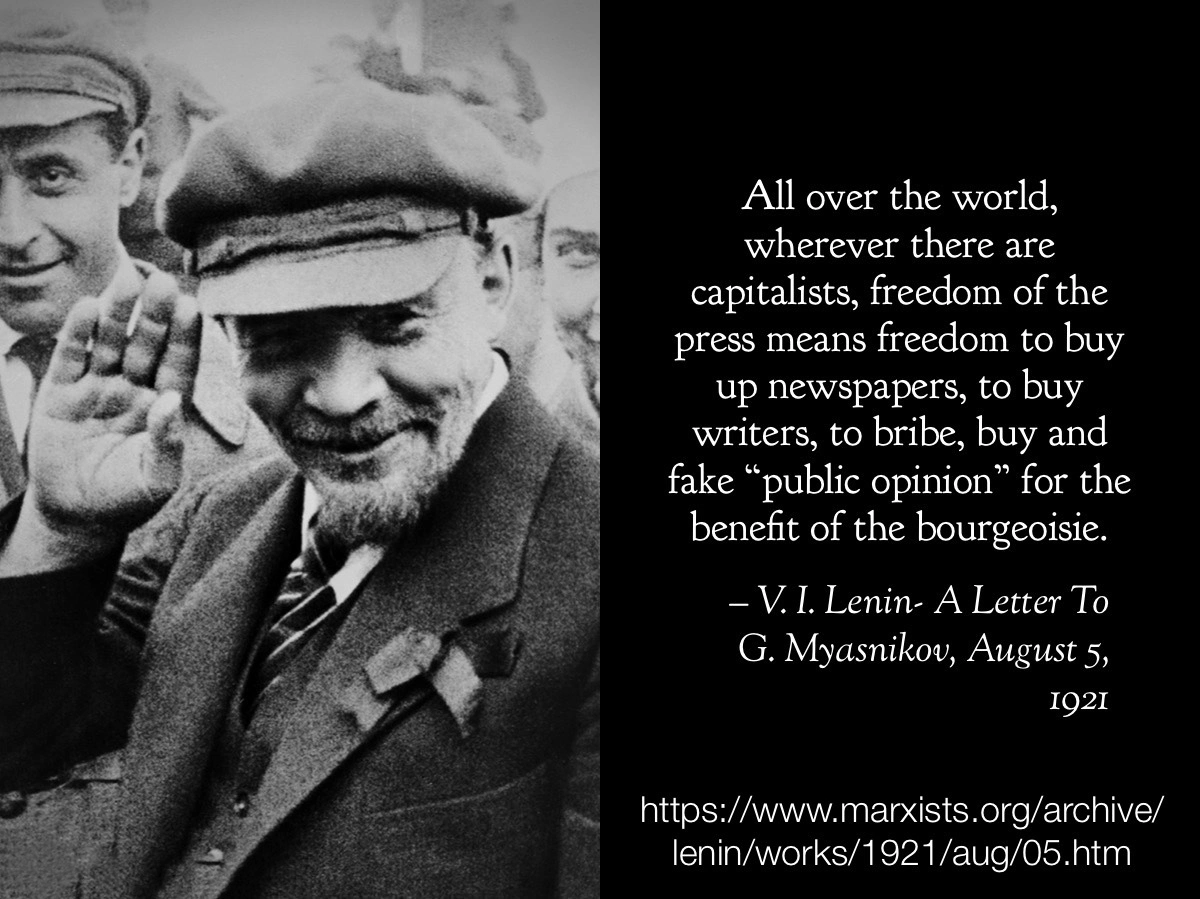
cross-posted from: https://lemmygrad.ml/post/1892258
> Source: https://www.marxists.org/archive/lenin/works/1921/aug/05.htm
-
Damn, is that the power of machinery or... ?


edit : didn't mentioned that the interest i saw with the graph above was that it's usually considered cheaper to work in China, and that developing countries need to 'be competitive'/'lower their salaries' in order to attract investments. This graph points out to the existence of other factors than wages in order to 'be competitive'/'attract investments'. Perhaps that a country should( somehow) become wealthy enough to enable its own capitalists to invest in machinery, leading to 'higher salaries'/'more (productive )investments'/'higher competitiveness', i.d.k. Still don't know as well how China escaped the trap that every other country fell in.
-
Resisting Internal Neo-Colonialism and Fascist Dictatorships inside the United States | Wounded Knee Occupation
socialistworker.org Remembering the Wounded Knee occupationOne of the most important examples of Native Americans' determination to resist oppression began 40 years ago.

One aspect of the Reservation system within the United States skipped over by common Marxists (and the American public in general) is that of the Neo-Colonial relationships between the US and Indigenous nations. In the 1970s on the Pine Ridge Reservation, the poorest community in the United States and home of the Oglala Lakota people, ruled a dictator by the name of Dick Wilson. Wilson funneled federal funds into his own wealth and to pay for a paramilitary to hunt down members of the American Indian Movement (AIM), a party of Indigenous radicals keen on fighting American encroachment and occupation of their lands and communities. The struggle between AIM and Wilson and his Fed backers, peaked in tension in the Wounded Knee Occupation. The occupation by AIM was called off after Wilson's army with the US special forces (disputed by the US government) and AIM reached a gun battle. Wilson remained in power even having been caught rigging an election, but a Federal judge interfered on his behalf, and many of his Lakota opponents died violently over the following years until his defeat in another election. Since Wilson's departure, the Pine Ridge Indian Reorganization Act (forced American governance) leadership has been centrist/liberal as the main radicals of the Reservation had been killed violently and many more imprisoned. Pine Ridge remains the poorest community in the country.
-
Understanding the Moscow Trials-Part 1 (1900-1920) | The Crimson Flag Podcast (1:17:45)
yewtu.be Understanding the Moscow Trials-Part 1 (1900-1920)Alright everybody, we're back with a new series! This is the first of several episodes that we will do on the Moscow Trials. For fuller context we decided to start our investigation with the beginnings of the Russian Social Democratic Labour Party. Hope you enjoy! Sources -------------------------...
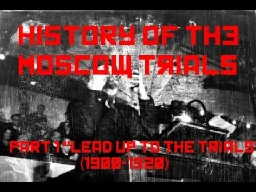
>This is the first of several episodes that we will do on the Moscow Trials. For fuller context we decided to start our investigation with the beginnings of the Russian Social Democratic Labour Party. Hope you enjoy!
Full playlist:
https://yewtu.be/playlist?list=PLylERqfCJuXgQa9m-0rxykESsmA-urQtS
-
Communists prevented famines in Poland, Czechoslovakia, & Korea
Quoting Transitional Economic Systems: The Polish–Czech Example (a work by an economic anthropologist), pages 63–5:
>The other and more devastating difficulty was the extraordinarily bad weather of 1947: first a destructive winter freeze immobilizing traffic, especially of coal, then spring floods destroying great areas of cropland and tearing down bridges, finally extreme summer drought ruining harvests and fodder and giving a head start to weeds and pests. > >The Soviet Union sent in large grain supplies, and famine was averted, but the losses had still been very great and the effect upon the meat and milk supply especially could not soon be made good. > >Reconstruction, nevertheless, went forward rapidly in 1947 and it was announced that the industrial portion of the year’s Plan had been fulfilled 103.4%. > >[…] > >During 1948 both industry and agriculture did better than planned. Industrial production exceeded [the] Plan by some 10%. Agriculture exceeded [the] Plan in all fields except pork production, doing particularly well in the rate of reclamation of idle lands, and in horse and cattle raising in spite of the previous bad years.
Page 105:
>The first year of Czechoslovakia’s first Plan was marked by the same catastrophic drought that struck Poland. > >Agricultural production for 1947 was down to only about two‐thirds of [the] Plan, in the case of sugar‐beets to half, and, most serious of all, the lack of fodder brought a great slaughter of livestock in the ensuing autumn and winter. (Milk was down to 40% in the latter half of the year, while meat was momentarily abundant.) Famine conditions had to be averted by importation. > >The Soviet Union granted a five‐year trade agreement, under the terms of which large amounts of grain and fodder were furnished at once, and Yugoslavia and Rumania also sent large immediate supplies. Subsequently the Soviet Union sent additional amounts. > >Altogether Czechoslovakia’s crop and animal losses were estimated at about £125,000,000. > >[…] > >Soviet Union: 200,000 tons each of grain and fodder, and subsequently another 200,000; Yugoslavia: 300,000 altogether; Roumania: 150,000.
The Destruction and Reconstruction of North Korea, 1950–1960 (a work by an history professor), page 2:
>To escape the bombing, entire factories were moved underground, along with schools, hospitals, government offices, and much of the population. Agriculture was devastated, and famine loomed. > >Peasants hid underground during the day and came out to farm at night. Destruction of livestock, shortages of seed, farm tools, and fertilizer, and loss of manpower reduced agricultural production to the level of bare subsistence at best. > >[…] > >By the fall of 1952, there were no effective targets left for U.S. planes to hit. Every significant town, city and industrial area in North Korea had already been bombed. > >In the spring of 1953, the Air Force targeted irrigation dams on the Yalu River, both to destroy the North Korean rice crop and to pressure the Chinese, who would have to supply more food aid to the North. > >Five reservoirs were hit, flooding thousands of acres of farmland, inundating whole towns and laying waste to the essential food source for millions of North Koreans. Only emergency assistance from China, the USSR, and other socialist countries prevented widespread famine.
(Emphasis added in all cases.)
-
Analysis on the Socialist Republic of Romania’s economy from the 1940s to 1977
While technically this comes from an antisocialist source, it’s also a rare example of presumed antisocialists (or perhaps simply nonsocialists) reporting on a people’s republic in a mature, sophisticated, and honest manner. For example, rather than immediately attributing some weakness in the economy to ‘socialism’ or ‘planned economy’:
>Although the development strategy has emphasized self-sufficiency as much as possible, Romania is too small and not endowed with enough natural resources to be totally self-sufficient.
>Steady gains have not been made in production, however, because of annual fluctuations in rainfall.
I have only read fifty pages so far, but this book looks good:
>The quantitative technical basis for Romanian planning is provided primarily by two research institutes under the SPC. The first of these, the Institute of Planning and Prognosis, is concerned with overall planning methodology and long-term forecasting techniques. The other, the Computer and Cybernetics Center for Planning, does all the computations connected with the plans and develops the sectoral models that form the basis of the sectoral plans. The models can be divided into three categories: > >> (a) Models for long-term projections, covering 1976-90, with extensions up to 2000; >> (b) Medium-term models, focusing on the five-year plan; >> (c\) Sector models for important sectors of the economy.
-
Soviet Women You Should Know | Dusya Vinogradova
Great video and new series from Lady Izdihar
-
Soviet mass graves at Mäntyvaara, eastern Finnish Lapland
(Mirror.)
Unfortunately, the author seems clueless about how diplomacy works (misleading a less careful reader to the implicit conclusion ‘Russians are self‐hating sadists’), and he makes some strange claims, as
> Soviet legacy of seeing POWs as traitors of the Motherland.
That said, this is only twenty‐one pages long, and some of the information is too important to overlook:
>The battle’s death toll was over 400 Soviet and 17 Finnish soldiers, on top of which 29 Finns were wounded and a few dozen Soviet prisoners taken. The next day, a local Finnish work company started burying the Soviet dead in four large mass graves on the battle field. This work was directed by the older brother of our informant, Mr. Alpo Siivola. His brother had later called it “an appropriate birthday present for Comrade Stalin.” The Soviet soldiers who had perished during their escape through the wilderness were buried the next summer when the melting snow revealed their bodies, but the locations of those gravesites are unknown.
-
Nicaragua in Latin America – the Invisible and the Reality
afgj.org NicaNotes: Nicaragua in Latin America – the Invisible and the Reality - Alliance for Global JusticeBy Stephen Sefton [Stephen Sefton has served as a community worker in Nicaragua for 28 years. Since 2008, he has coordinated the web site Tortilla con Sal which follows events in Nicaragua and the region.] (This article was first published by Tortilla con Sal on October 23, 2022.) In Nicaragua...

-
The Lithuania buffer problem of 1920
(Mirror.)
Although the author, Česlovas Laurinavičius, is unlikely to be communist, he is the first Baltic academic that I’ve found who actually takes history seriously, handling the subject with maturity, thereby making it both more credible and more pleasurable to read:
>The Curzon Line is usually identified as the line of 8 December 1919 (similar to the current eastern border of Poland), running to the east of the Daugavpils-Vilnius-Hrodna railway. Typical historiographical texts state that the Soviet government decided to ignore the Curzon Line after 17 July 1920. But in fact, the Red Army crossed the Curzon Line on 13–14 July and continued to occupy Vilna (Vilnius). Another inaccuracy follows from this one. The prevailing trend is to interpret the Lithuanian state’s situation in 1920 as facing one of two ideology-based alternatives: either Lithuania is sovietised, or it is ‘saved’ by Poland, which occupies Vilnius and separates Lithuania from contact with Soviet Russia. > >But this raises a whole swathe of questions: how should the Lithuanians’ struggle for Vilnius during the whole interwar period be viewed? How should assistance to Lithuanians from other countries, such as Germany, the USSR and Great Britain, be assessed? Finally, how should the return of Vilnius to Lithuania in 1939 be viewed? There is no answer to these questions, but the possibility of Lithuania as a buffer zone thanks to the Curzon Line, is ignored or hardly analysed at all. Using historical documents from Lithuania, Great Britain and Russia, and referring to the studies by Alfred Erich Senn, this article aims to find an answer to the question, why was the idea of Lithuania as a buffer state not realised in the summer of 1920?
-
On this day in 1943, the Red Army cut the Fascists’ final rail link to the Crimea by capturing Chaplinka
archive.org Chronology of World War Two : Davidson, Edward : Free Download, Borrow, and Streaming : Internet Archive286 pages, 16 unnumbered pages of plates : 24 cm

(Coincidentally, the IS‐2 tank was officially approved for the Red Army and the Allies destroyed the Axis submarines U‐306, U‐584 and U‐732 in the Atlantic Ocean.)
-
"Chiang Kai-shek, Asian People's Anti-Communist League and the Moonies"; "Arms and Drugs in Burma", and the global rollback network (Excerpt from a book I am reading)
Lately I have been reading a book from 1989 called "Rollback: Right-wing Power in American Foreign Policy". In it, the authors detail what they refer to as the "global rollback network", i.e., the imperialist reaction against communism, and what they describe as a network of "cadres" from various reactionary groups committed to complete rollback of communism in a public-private network of crime, politicians, business, military, arms dealers, etc. (Although I haven't read "American Exception" by Aaron Good, I believe this is basically discussing the same phenomenon from what I have heard about his book.)
This book does not have a Marxist analysis, but it's pretty interesting, especially as it is a snapshot of its own time, naming names of figures involved in regime change operations, drug smuggling, etc. at the time, and the relatively recent background of their activities in the 1950s, 60s, and 70s.
Anyway, I thought I would include a section of it here for anyone interested.
---
long excerpt about Chiang Kai-shek, APACL and the Moonies and Drug and Arms dealing in Southeast Asia
Chiang Kai-shek, APACL and the Moonies
Domestically the China Lobby was an important precursor of the modern rollback Right, but far more important were the international linkages developed between the CIA and the first major contra army, the Nationalist Chinese.
After being routed from the Chinese mainland, Chiang Kai-shek and his troops (described by U.S. Army Gen. Joseph Stilwell as "a Gestapo") had established themselves on Taiwan by a massacre of perhaps 20,000 Taiwanese. From 1950 to 1970, Chiang and his Nationalist Chinese played major roles in the U.S.-directed covert warfare programs in East Asia. Wherever the CIA went, they were able to make use of the natural networks of Chinese businessmen all over the Pacific. According to Asia scholar Franz Schurmann, the Chinese supplied the CIA with saboteurs, commandos, agents, smugglers, spies, and “businessmen” to help out in the complex world of East Asian transactions.
Close cooperation between U.S. covert intelligence agencies and the Taiwanese government continued in this period. This included the establishment of the Political Warfare Cadres Academy, allegedly with the help of Ray Cline, who was Taiwan CIA Station Chief from 1958-62. This school provided warfare training to thousands of Third World military figures. Prominent graduates include El Salvador's Roberto d'Aubuisson, widely viewed as the mastermind of his country's death squads; Lieutenant Colonel Domingo Monterrosa, a Salvadoran military commander whose troops massacred an estimated one thousand civilians at Mozote in December 1981; Amilcar Santamaria, a rightist Honduran political figure; and numerous other intelligence officers in the armies of Latin American dictators.
Concurrently, the United States collaborated with Chiang Kai-shek and South Korean intelligence in founding the Asian People's Anti-Communist League (APACL) in 1954. Ex-Nazi collaborators from Eastern Europe also helped set up APACL. This organization had the purpose of uniting conservatives from all over the Asian continent to battle communism. Possibly arranged through Taiwanese CIA station chief Ray Cline, U.S. funds seem to have helped start APACL. APACL also drew sustenance from the coffers of the Japanese Right. Ryoichi Sasakawa and Yoshio Kodama were prominent members of the wartime fascist Tojo clique who had been convicted of war crimes. In a manner analogous to the rehabilitation of German Nazi war criminals to serve the interests of the West, these individuals were freed in 1948 and helped to bankroll APACL.
Intertwined with APACL was the Unification Church of right-wing Korean Reverend Sun Myung Moon. Moon received major financing from Sasakawa (who has called himself the world's wealthiest fascist) and Kodama. The Korean CIA (whose precursor may have been set up in part by General Singlaub, CIA deputy chief in South Korea in the 1950s), organized by South Korean dictator Park Chung Hee to support his 1961 military coup, adopted the Unification Church as its political arm. Park, as head of one of the world's chief rollback governments, was also a major actor in APACL. In both Korea and Japan, the Moonies and APACL were closely interrelated.
Two important rollback activities in Asia were the Nationalist Chinese attempt to overthrow the Chinese government and the multiple coups in Laos to prevent neutralist governments from gaining power. (See Chapter One.) These two related operations, spanning the 1950 to 1970 period, were the true moments of birth for Rollnet (Note: this is the author's term that refers to a "global rollback network" against communism); individuals joined in covert warfare in Asia then spread out as rollback operatives throughout the world.
Arms and Drugs in Burma
The Burma-based Nationalist Chinese operations directed against communist China in the 1950s were supplied by the CIA airline Civil Air Transport (CAT), with some pilots drawn from the ranks of ex-Nazis recruited by the United States. CAT was originally organized by Gen. Claire Chennault in consultation with Colonel Richard Stilwell, the CIA's Office of Policy Coordination chief for the Far East. Also used in these activities was the CIA-run Sea Supply Corporation, which brought arms to the Chinese contras. Sea Supply was run by Paul Helliwell who, as chief of the OSS mission in China during World War II, had used opium bricks to pay off local informants, initiating intelligence-related involvement with drug traffic. Continuing this tradition, Nationalist Chinese trafficked in Burmese opium, using CAT planes delivering arms to ship the opium out, to-ultimately reach the world market. These GIDO (guns in, drugs out) operations persisted in Laos and later in Vietnam and Central America.
During this period the China Lobby was taking out full-page ads asserting (without evidence) that communist China was behind the heroin trade. But the truth about the Burmese operation leaked, causing a scandal leading to Stilwell's dismissal and the cessation of direct CIA support for the Chinese contras. However, APACL, probably using the same CAT planes, took over the supply operation.
[...]
Besides Burma and Laos, a third Southeast Asian GIDO operation involved the pro-U.S. Montagnards in South Vietnam, whose loyalty was to some extent bought by Air America assistance in bringing the Montagnards' opium crop to the world market. Mafioso Santos Trafficante, fresh from his covert work against Cuba, was also a key organizer of this drug network. The multiple purposes of the drug smuggling were to gain the favor of opium growers, to generate funds for the secret operations themselves, and to gain personal profit. The networks created by GIDO operations formed the basis of Rollnet: U.S. military and intelligence personnel, contra armies, airlines, banks, arms, and drug dealers.
The drug trade run through Air America blossomed. As well as supplying the habits of the addicts that at one point comprised over 5 percent of the U.S. armed forces, heroin from the "Golden Triangle" came home to hook tens of thousands of U.S. citizens. Most of the drugs came through Florida via anti-Castro Cuban networks working with the Trafficante organization, with Trafficante himself visiting Southeast Asia to coordinate the setting up of regional heroin factories to supplement the Corsican networks that heretofore had provided the only source of street heroin.
With the fall of the Saigon regime in 1975, the covert assets that had been carefully nurtured over the years were removed for future use. Under the direction of Assistant Secretary of Defense Erich von Marbod and the CIA apparatus headed by Shackley, millions of dollars worth of arms and profits from the heroin trade were transferred out of Vietnam. Money was deposited in secret accounts around the world. Of special note was the use of the Nugan Hand Bank in Australia, which would provide a secret source of funding over the next few years for U.S. covert operations, including the destabilization of the Australian Labor Party and possibly the South Africa-backed Savimbi insurgency in Angola.
Nugan Hand's connection with the entire Rollnet web is underscored by the people intimately involved with its activities. Individuals associated with the bank included Theodore Shackley, Thomas Clines, and Edwin Wilson, later convicted of selling arms to Libya. The president of the bank, which stole the savings of low-level military personnel, was retired Rear Adm. "Buddy" Yates, who had been the chief of staff for planning for U.S. forces in Asia and the Pacific. The head of the bank's Hawaiian operations was retired Gen. Edwin Black, who had been the commander of U.S. troops in Thailand as well as assistant army chief of staff in the Pacific. Former CIA Director William Colby served as a lawyer for Nugan Hand. The bank reportedly laundered money for Suharto of Indonesia, provided services for Marcos of the Philippines, and assisted the Shah in shifting money out of Iran.
Southeast Asia, then, was the cradle of the global rollback network. Close behind in importance was Latin America, in particular the operations involving Cuba.
-
Learning a lot from "The Assassination of Julius Caesar".


Seriously, did not expect this much easily comparable shit coming out of the mouths of elites. It's the same exact rhetoric used by conservatives and other anti-communist mouthpieces today.
I never disagreed that Amerika was Rome 2.0., but wow did I not know the extent of it. First tragedy, then farce.
Polybius and Cicero really be out here saying "we should take the best of both capitalism AND socialism" in the years of our lord ~200-40 B.C.
-
SanctionsKill Campaign funding a new book on the deadly effects of sanctions
>Everyone who donates $25 or more will receive a copy of the 200 page book: Sanctions – A Wrecking Ball in a Global Economy. > >The impact of sanctions on more than 40 developing and formerly colonized countries, one third of the world's population, was barely discussed in mainstream media for decades. The vibrations of hyperinflation, chronic shortages, and economic dislocation in surrounding countries were ignored. U.S. sanctions from Afghanistan to Zimbabwe have devastated entire nations. The impact of sanctions on Cuba, Iraq, Iran, Syria, and Venezuela creates enormous hardships. > >But now the sanctions on Russia and China have boomeranged. Supply chain chaos, shortages possibly leading to famines, inflation, energy instability, have shaken the global economy. Most countries of the Global South have refused to respect U.S. and EU legislation that damage their access to essential grains and energy. > >The U.S dollar is now challenged as the currency of global trade. New forms of currency exchange using ruble, yuan, rupee are a growing option. New forms of trade and exchange are threatening U.S. global hegemony and a unipolar world. > >Despite the intense pressure of economic shortages, countries have survived. What measure have they used? > >These are the themes we raise in this unique book. > >The book: Sanctions – A Wrecking Ball in a Global Economy is a project of the SanctionsKill Campaign. The International Action Center is a proud part of this Campaign for the past 3 years of intense activity. > >The SanctionsKill Campaign is an activist project. Using petitions, actions, webinars, fact sheets and reports, the Campaign seeks to expose the human cost of sanctions. The campaign has developed multimedia teaching tools that are included in this book. > >Gathering the chapters, editing, proofreading and correcting, choosing fonts, is all done by skilled volunteers. > >After a year of work this unique book is ready to send to the printer! > >But our final step involves you! > >We hope to raise $3,000 to cover the printing costs for the first print run so that student groups, solidarity organizations, classes can order this popularly written book in bulk, at a big discount, and use it as a resource in campaigns. > >Everyone who donates $25 or more will receive a copy of the book. Maybe you can donate more? Maybe you would like to pre-order several books to use as gifts? > >Donate by credit card at https://iacenter.org/sanctions-book > >U.S. sanctions are a powerful weapon of compliance that operates in the shadows. Our role is to break this silence and mount an international campaign against this criminal U.S. policy. > >Can we count on your support? > >Help us break the silence and mount an international campaign opposing US sanctions on more than 40 countries. This is a crime against humanity. > >Donate by credit card at https://iacenter.org/sanctions-book > >OR > >Mail your donation to: > >International Action Center > >147 W. 24th St, 2nd Fl, NY, NY 10011
(Emphasis original. Received through email.)
-
Thatcherism: What We Get Wrong About Neoliberalism
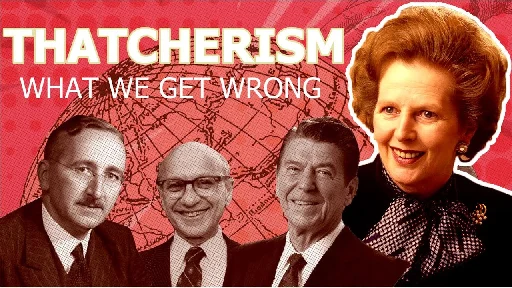
YouTube Video
Click to view this content.
Good deconstruction of neoliberalism as well as UK history that better conceptualizes it.
Like a lot of critics, I often found myself falling into the same rhetorical pitfall of categoriizing neoliberalism as not that dissimilar from classical liberalism, akin to Hoover's economic policies in the U.S., but there are meaningful differences that often get swept under the rug that only benefit libertarians and proponents of said classical liberals in their obfuscation. Kay does a brilliant job at underlining the differences here.
-
Why does Russia have an active Communist Party?
Post-Soviet Russia was obviously very anti-communist and the communist party of Russian Federation provides opposition, why allow them to have that much pull, from the Russian Federation perspective? Did they ban the party in the past and it was unsuccessful? Is the current Communist Party shitty and easily manipulated to be allowable in mainstream politics?
-
Beginner’s guide to Kim Il Sung/ DPRK??

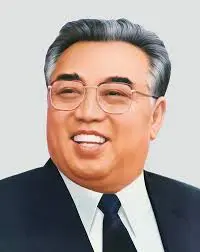
I will fully admit I know barely anything at all about DPRK, ESPECIALLY early DPRK. I read a lil theory every now and then and I realized I never read anything about Kim Il Sung or North Korea. So I wonder: what do you suggest I read? Any good documentaries? Did Kim Il Sung write any really good theory?
-
The Crane: Episode #5 - China & DRC: Mining, Local Elites, & US Scramble for Strategic Minerals
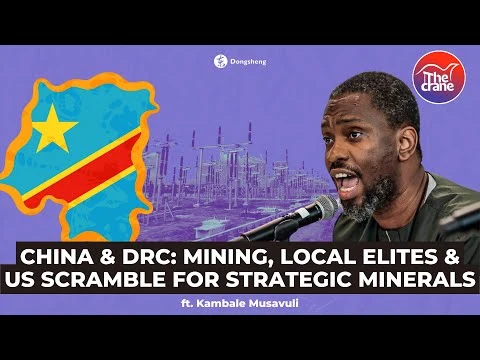
YouTube Video
Click to view this content.
-
Audio interview about post WWII Japan, evolution of Japan's right wing, destruction of Japan's labor movement, background of Shinzo Abe, US influence in Japan & East Asia politics then & now
soundcloud.com Who Was Shinzo Abe and Why Was He Assassinated?Former prime minister of Japan Shinzo Abe was assassinated last week. He was a leader of the country’s ultra-conservative movement and one of Japan’s most powerful political figures. Some have even re

Interview covers a range of issues in post-WWII Japan up to the present day, with a focus on the development of Japan's right wing and the influence of the US in helping develop the Japanese right wing, such as by enabling Japanese war criminals to enter into politics. Also discusses the destruction of the Japanese labor movement/left wing via paid gangsters and talks about the high amount of CIA activity in Japan and the background of Shinzo Abe and his associated political party. Covers present-day international politics in regard to Japan as well as some internal political issues of Japan, and finally touches on the assassination of Abe.
For someone who wants an overview of Japan's recent history, I think this interview can serve as a good jumping off point for looking more deeply into the various topics they mention.
-
CIA Archives: Secrets of Espionage: Allen Dulles on the Overthrow of Governments by the U.S. (1965)

YouTube Video
Click to view this content.
-
North American Universities and the 1965 Indonesian Massacre
>University professors did not just offer a skewed notion of economic development; some of them also advocated military takeovers in order to achieve it. Before the 1955 Indonesian election, most US Indonesianists, above all those who were faculty at Harvard, MIT, and UC Berkeley, had naively assumed that U.S. advice and aid would enable Indonesia to evolve into a more and more western-oriented nation willing to engage in western-style economic development. The same naïve hope may have initially inspired those professors at the University of Chicago training the economists who implemented Pinochet’s privatization programs after the overthrow of Allende in 1973. (The program linking South Vietnam to Michigan State was however plagued with controversies from its outset, with one visiting economist subsequently suggesting that "a military coup may be the only means" of saving Vietnam.) > >By 1958, however, the PKI (the Indonesian Communist Party) had emerged as the largest mass movement in the country, and everyone expected that they might come to power in the next election. At this point Pauker and other American social scientists in the U.S. Air Force and CIA-subsidized "think-tanks" began to argue in favor of military-led economic development, and to urge this new notion, successfully, on their military contacts in Indonesia and Brazil. > >Specifically, they > >>began pressuring their contacts in the Indonesian military publicly, often through U.S. scholarly journals and presses, to seize power and liquidate the PKI opposition. The most prominent example is Guy Pauker, who in 1958 both taught at the University of California at Berkeley and served as a consultant at the RAND Corporation. In the latter capacity he maintained frequent contact with what he himself called "a very small group" of [Indonesian university] intellectuals and their friends in the army. > >A key event was an August 1959 conference organized by RAND on “The Role of the Military in Underdeveloped Countries,” which produced a book with the same title published by Princeton. In this book, > >>Pauker urged his contacts in the Indonesian military to assume "full responsibility" for their nation's leadership, "fulfill a mission," and hence "to strike, sweep their house clean." Although Pauker may not have intended anything like the scale of bloodbath which eventually ensued, there is no escaping the fact that "mission" and "sweep clean" were buzz-words for counterinsurgency and massacre, and as such were used frequently before and during the coup. The first murder order, by military officers to Muslim students in early October, was the word sikat, meaning "sweep," "clean out," "wipe out," or "massacre." > >Eleven months before the coup, Pauker signaled even more blatantly in a RAND publication to his Indonesian army friends, expressing disappointment for their not “carrying out a control function,” and for lacking “the ruthlessness that made it possible for the Nazis to suppress the Communist Party, a few weeks after the elections… in which the Communist Party still won five million votes.”
-
The Crane: An Africa-China Podcast
> A bi-monthly podcast giving you a fresh look at the news, events, and debates around China-Africa relations from the perspective of two young(ish) Africans. Brought to you by the Dongsheng Collective.
-
Antifascist Omar Mukhtar was born on this day in 1862. He fought colonialism for nearly two decades.


>‘Omar al-Mokhtar is considered the great symbol for the Libyan resistance (Jihad) against the Italian occupation. In 1922 he reorganized the Mojahideen and re-ignited the resistance against Italy after World War I when the [Fascists] thought that they succeeded in silencing the Libyan resistance. Omar Al-Mokhtar was ill [a] couple of times and many of his comrades asked him to retire and leave the country; he was [nearly] 80 years old. But he refused and kept fighting and he deserved a name given to him as “The Lion of the Desert.” On 16 September, 1931 the [Fascists] hanged Omar Al-Mokhtar in the city of Solouq and they forced the Libyans to watch their hero be hanged. No consideration to Omar Al-Mokhtar's old age, no consideration to international law and no consideration to world war treaties.’
(Source. Note that the ‘Mojahideen’ is not to be confused with the unrelated Afghan mujahideen.)
As paraphrased in the dramatization Lion of the Desert, to General Rodolfo Graziani:
>‘We will never surrender. We win, or we die. […] You will have the next generation to fight, and after the next, the next. As for me, I will live longer than my hangman.’
— Omar al-Mukhtar (1862–1931)
- wp.me The Trade Unions & Actually Existing Socialism: A Point of Comparison for the American Worker
“In 1934, the [Soviet Union] government abolished the existing national department of labor and turned its functions over to the All-Union Central Council of Trade Unions, it being taken for …

-
Twenty years ago, Nigerian women took over ChevronTexaco and won concessions
www.workers.org Twenty years ago, Nigerian women took over ChevronTexaco and won concessionThe following article first appeared on workers.org in two parts, dated Aug. 1 and 8, 2002. In honor of Black August founded in 1979, WW is reprinting slightly edited versions of both articles which can also be found in “Marxism, Reparations and the Black Freedom Struggle” on workers.org/book/marxis

>This takeover included taking a couple of thousand employees and managers hostage. In two separate takeovers, these indigent women brought oil production virtually to a halt. This subsidiary normally produces half a million barrels daily. Nigeria as a whole produces 1.8 million barrels of oil a day, creating billions in profits for Big Oil. > >Why have these women risked their lives to carry out these actions? They simply wanted to force a written agreement from ChevronTexaco, a multibillion-dollar global conglomerate, that it would provide their communities with electricity, schools, water systems, health clinics and other infrastructure to raise the level of their living standards. The women are also demanding that jobs be provided, including to their unemployed sons, and that pensions be provided for people over the age of 60. > >The women protesters also decided to take these actions, because when their male counterparts attempted similar actions, they faced a greater risk of being arrested or physically harmed by police.
-
My response to "communism doesn't work":
cross-posted from: https://lemmygrad.ml/post/284346
> Cuba has a higher literacy rate than the US. > > The CPSU turned the Soviet states from backwards feudal shitholes into industrialized, functional economies and societies in a matter of 2 decades. > > China doubled its population under Mao and literacy rates were boosted from the pre-PRC times. Just look at China's life expectancy from 1850 to 2020; before the founding of the PRC the average life expectancy was 32 years only for it to skyrocket after the establishment of socialism in 1949. The PRC is also one of the most successful democracies in the world. According to Harvard, the CPC has a support rate of 95.5%, and according the Latana-Alliance of Democracies Foundation (the latter is FUNDED BY NATO ITSELF), China has the highest percentage of people who think that their country is a democracy (83%) compared to America's 49%). > > I could keep going about the successes of socialism. But now, let's talk about capitalism, shall we? After the collapse of the USSR in 1991, countries like Russia and Ukraine implemented economic shock therapy - liberalizing price controls, privatizing public property, etc. The economy crashed so hard that the Russian male life expectancy fell by 10 years. Russia and the Ukraine were turned into oligarch-infested wreckages of the economies they once were (sometimes literally; how many pictures of Ukraine have you seen that included several buildings that were built after the collapse of the USSR?). Domestic industries were replaced by imports (ie the infamous "Bush legs" that replaced Russia's native chicken industry), leading to enormous capital outflows from Eastern Europe to the West. Assets collapsed in value, allowing Westerners to purchase them at bargain prices; inflation was through the roof. > > The economic failures were not made up for by some mythical "increase in democracy", either. Just look at 1993 Russia, where Yeltsin bombarded the parliament building and killed upwards of 2000 people in doing so, or 2014 Ukraine, in the Odessa trade-unionist massacre. 42% of Estonians are banned from voting because they are of "Russian, Ukrainian, or Belorussian ancestry". > > In the end, both socialism and capitalism work wonderfully...to achieve their intended purpose. Socialism raises confident generations that take their fates into their own hands, whereas capitalism raises confident generations of old swine, robber barons that make their living off the blood of workers.
- wp.me Inflation: wages versus profits
The Governor of the Bank of England, Andrew Bailey set the attitude of the mainstream view on the impact of inflation in February, when he said that “I’m not saying nobody gets a pay rise, don’t ge…
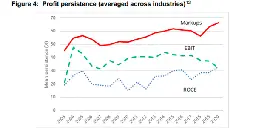
Gimme more of that famous capitalist ‘poverty reduction’!
>Since the COVID slump, labour’s share of income and real wages have been falling sharply even as unemployment falls. This is the complete opposite of the Keynesian inflation theory and the so-called ‘iron law of wages’ proposed by Weston against Marx. The rise in inflation has not been driven by anything that looks like an overheating labour market—instead it has been driven by higher corporate profit margins and supply-chain bottlenecks. That means that central banks hiking interest rates to ‘cool down’ labour markets and reduce wage rises will have little effect on inflation and are more likely to cause stagnation in investment and consumption, thus provoking a slump.
Mmm, yummy!

